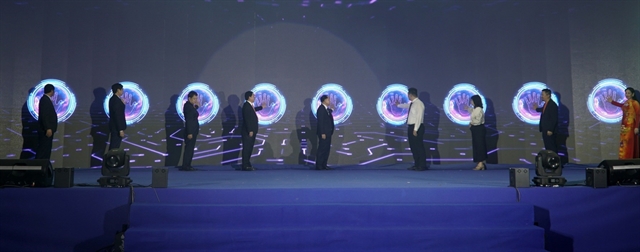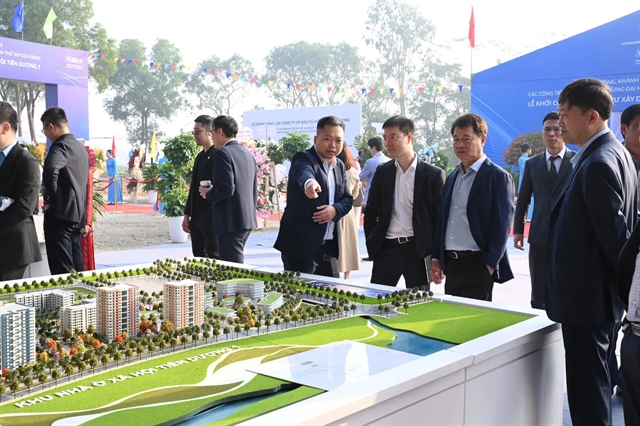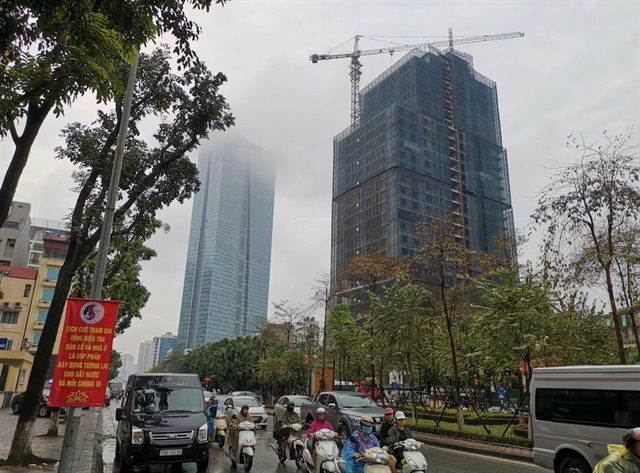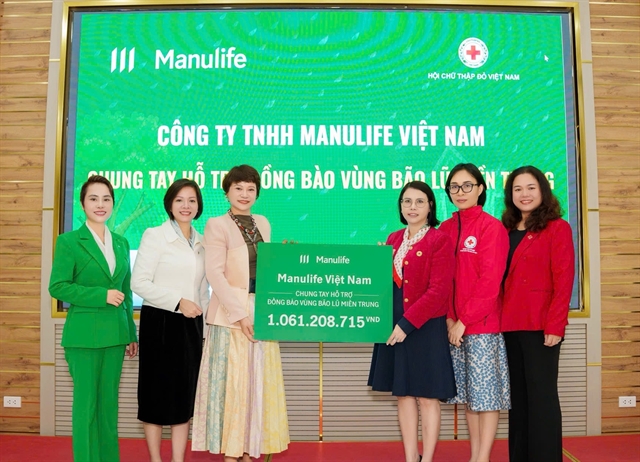 Society
Society


|
| Construction activity is one of the main causes of air pollution in Hà Nội. VNA/VNS Photo |
HÀ NỘI – In recent years, Hà Nội has been continuously listed as one of the world's most polluted cities in terms of air quality.
Grey skies in the capital are not only a weather phenomenon but also an urgent warning about the health and quality of life for millions of city residents.
According to experts, Hà Nội’s grey skies are the result of a complex interplay of culprits, including traffic, construction, industrial production, and civil activities.
Nearly eight million vehicles – of which six million are motorbikes, many of them old – are considered a major contributor to PM2.5 dust and other toxic gas emissions.
Construction activity is the second main cause of air pollution. Rapid urbanisation has turned the city into a huge construction site with thousands of housing and infrastructure projects. However, environmental management at these projects still has many shortcomings.
Along with the major emissions sources, living habits and agricultural production are also silently poisoning the atmosphere, with spontaneous waste burning, the use of honeycomb charcoal stoves, and especially the seasonal burning of straw in the suburbs. All of this has created a thick layer of smoke and dust that is carried by the wind into the inner city.
Dr Hoàng Dương Tùng, president of the Việt Nam Clean Air Network, told kinhtedothi.vn that the legal framework for air quality control is not specific enough to catch up with socio-economic development.
Air pollution can cause serious health risks, such as respiratory infections, cardiovascular diseases, strokes, and lung cancer.
According to statistics from the Ministry of Health, the rate of patients with respiratory infections, bronchial asthma and pneumonia in Hà Nội has increased rapidly in recent years, especially in children and the elderly - the two groups most vulnerable to ultra-fine dust particles.
Dr Lê Hoàn, head of the Department of Endocrinology and Respiratory Medicine at Hà Nội Medical University Hospital, said that fine dust is known as a dangerous killer because when it enters the body, it can cause damage to multiple organs. It can be very harmful to health, causing respiratory diseases, cardiovascular diseases and strokes.
Political determination, smart management
Faced with the alarming state of air pollution, the city is not sitting still.
A war to regain clean skies is being fiercely waged on various fronts.
However, the blue skies will not automatically return. An action plan is required, based on three main pillars: determination and intelligence in government management, the synergy of businesses, and the community and the inspirational role of the media.
According to experts, in the digital era, political determination should be equipped with technology, such as the application of Big Data, artificial intelligence (AI) and Internet of Things (IoT) in environmental management.
A dense network of IoT sensors are needed to continuously update data in real time to a single control centre. There, AI algorithms will analyse, predict pollution hotspots, and help identify the source of emissions.
Management will then shift from passive and incident-driven to proactive management based on data and science.
The fundamental solution lies in establishing an integrated management mechanism, in which air, energy, transport, construction and waste issues are all placed in an organic relationship and managed as a unified entity.
“The important thing is to have a leader with enough heart and enough scope and power to execute, to be the general engineer for the entire campaign. If we only stop at small projects, lacking connection, the efficiency will be low and will not create fundamental changes,” Dr Tùng said.
He noted that to reduce toxic emissions and gradually improve air quality, authorities, businesses and people must first be aware of the importance of the environment.
Currently, there is still a mindset of sacrificing the environment for economic development, rather than investing in exhaust treatment systems. Sanctions are needed to severely deal with acts that cause air pollution, Dr Tùng said.
Meanwhile, director of the Hà Nội Department of Agriculture and Environment Nguyễn Xuân Đại confirmed that improving air quality is an urgent and long-term task. The city is committed to prioritising resources and mobilising community participation to bring clear skies to the capital as soon as possible.
The city needs to develop a clear mechanism for its programme titled 'Green Business-Green Hà Nội'.
Instead of just calling for action, specific incentives should be offered, such as tax incentives, green credits or 'Environmental Business' certification for pioneering units investing in clean technology and reducing emissions.
When businesses realise that investing in the environment is also investing in their brand and sustainable development, they will become the most important allies, Đại said.
Models like 'Green Residential Areas' with clear criteria for waste classification and tree ratios, 'Green Schools' with a substantial environmental education programme or 'Green Offices' that encourage employees to use public transport will create micro changes, but have extremely strong spreading power.
Finally, the media needs to contribute to building a new culture for Hanoians, such as prioritising walking, cycling, using public transport, and reducing single-use plastic and responsible consumption.
The journey to reclaim the blue sky is a marathon, not a sprint. It requires perseverance, synchronisation and, above all, trust. VNS




